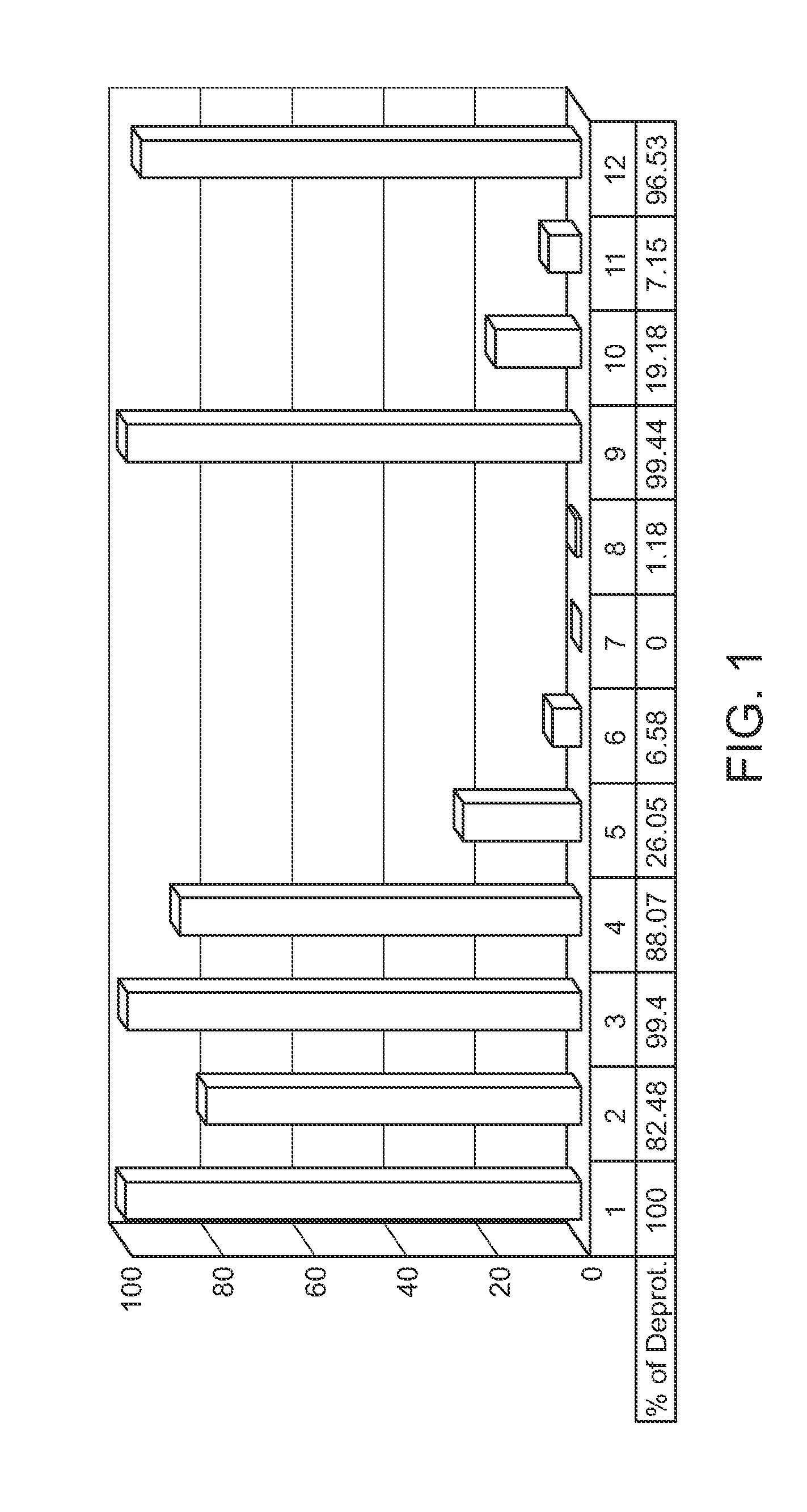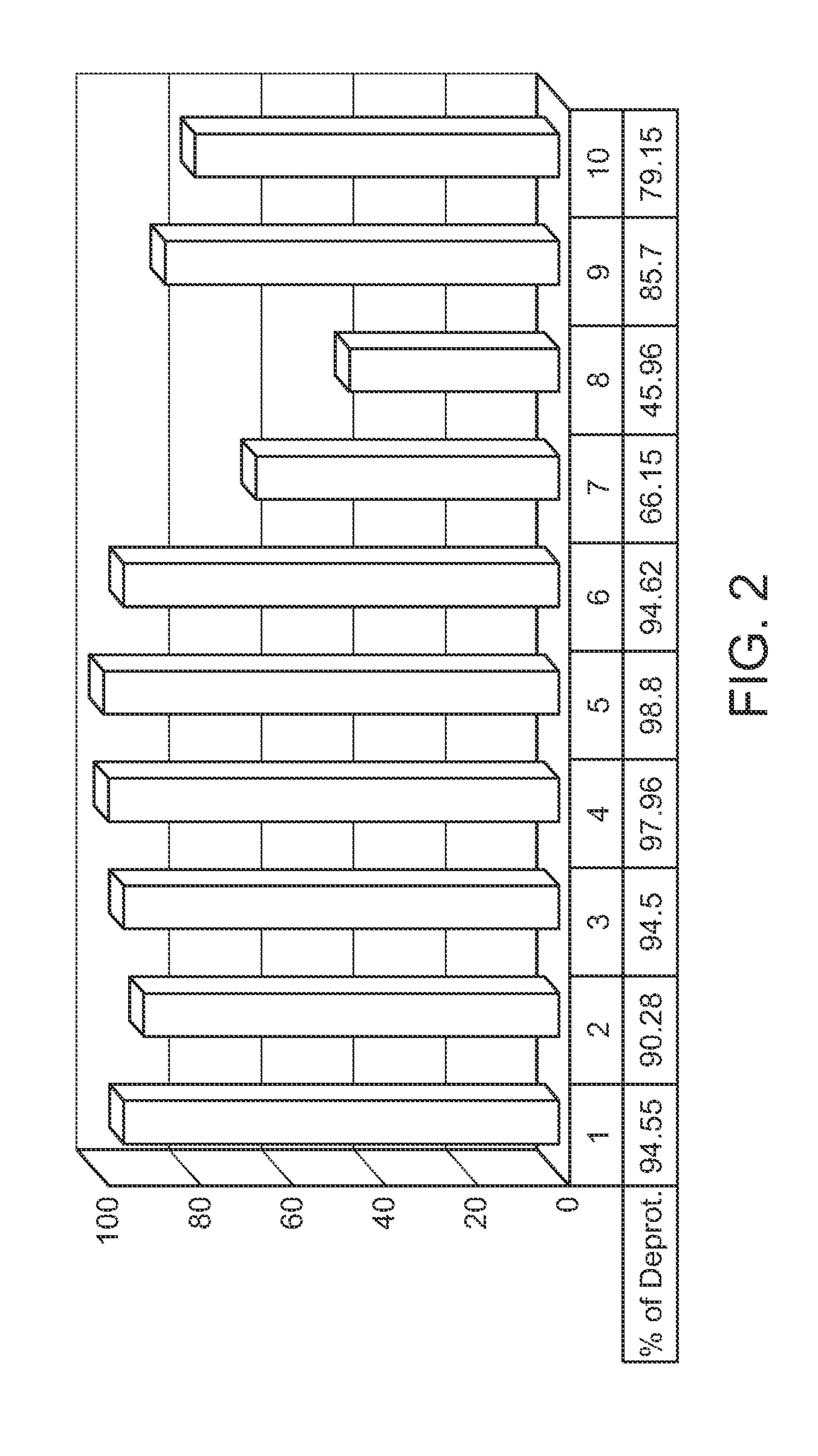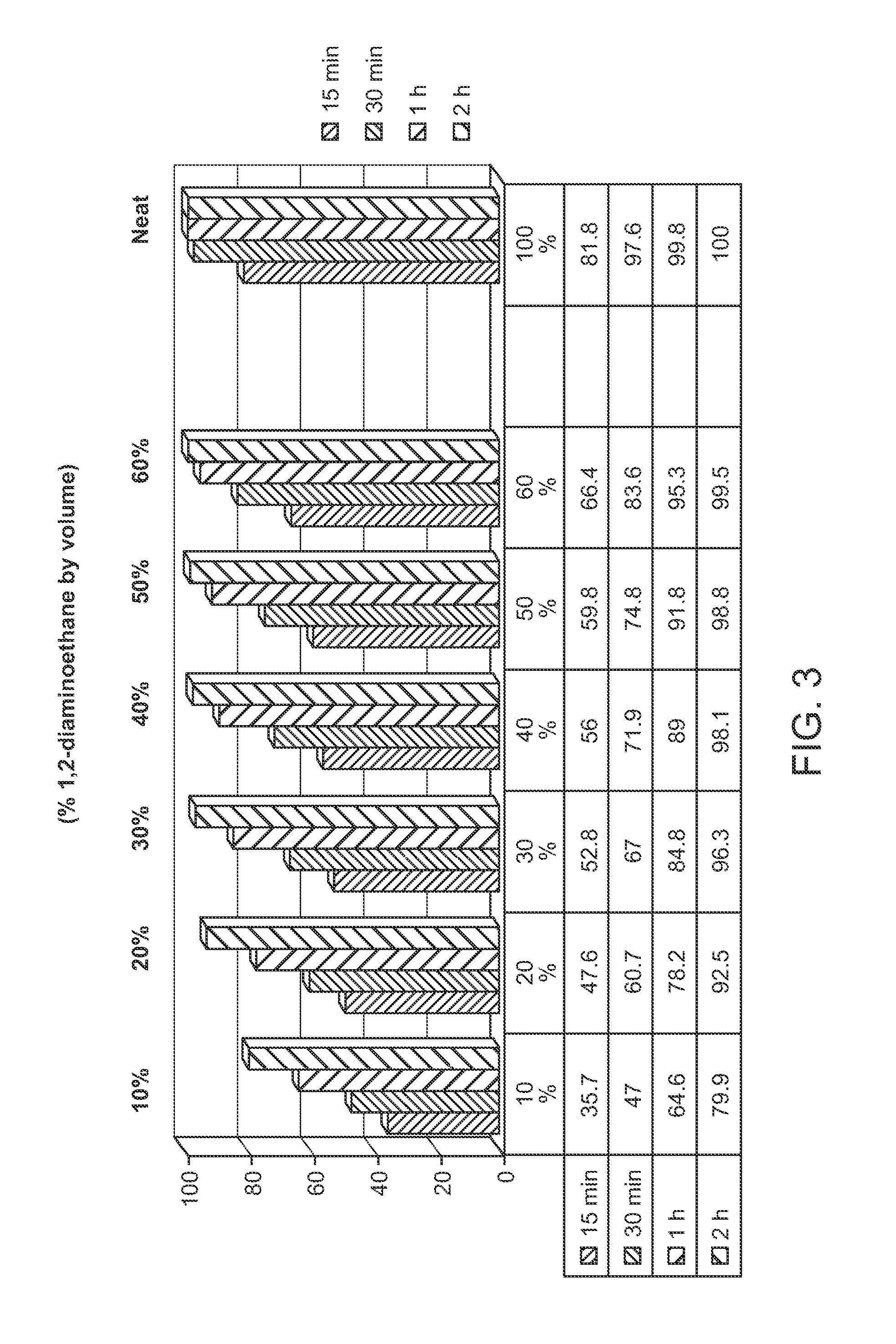Protected monomers and methods of deprotection for RNA synthesis
a technology of rna and monomers, applied in the direction of sugar derivates, isotope introduction to sugar derivatives, chemical production, etc., can solve the problems of difficult to predict rna shapes, difficult to predict long-range base-pairings, and difficult to predict rna tertiary structures with current tools
- Summary
- Abstract
- Description
- Claims
- Application Information
AI Technical Summary
Benefits of technology
Problems solved by technology
Method used
Image
Examples
examples
Synthesis of Various 2′-Thionocarbamate Protected Monomers
Synthesis of r-O-(morpholine-4-carbothioate)-5′-O-(4,4′-dimethoxytrityl)-uridine-3′-O-(β-cyanoethyl)-N,N-diisopropyl-phosphoramidite (1)
[0434]
[0435]3′-5′-O-(Tetraisopropyldisiloxane-1,3-diyl)-uridine (ChemeGenes, 10 mmol, 4.86 grams) was dissolved in anhydrous acetonitrile (17 mL) in a 50 mL roundbottom flask fitted with a rubber septum, and 1,1′-thiocarbonyldiimidazole (Aldrich, 10.5 mmol, 1.87 g) was added. The reaction was allowed to stir for 2 hours. After 2 hours, the reaction mixture was a slurry of crystals. The crystals were isolated by filtration through a medium sintered glass funnel. The product was washed with cold acetonitrile (10 mL) and dried under vacuum. TLC analysis confirmed that the product was a single species giving 5.97 grams of product (100%). ESI-Ion Trap mass spectroscopic analysis confirmed the product as the 5′,3′-O-(tetraisopropyldisiloxane-1,3-diyl)-2′-O-(imidazole-1-carbothioate) uridine with a ...
PUM
| Property | Measurement | Unit |
|---|---|---|
| Force | aaaaa | aaaaa |
| Structure | aaaaa | aaaaa |
Abstract
Description
Claims
Application Information
 Login to View More
Login to View More - R&D
- Intellectual Property
- Life Sciences
- Materials
- Tech Scout
- Unparalleled Data Quality
- Higher Quality Content
- 60% Fewer Hallucinations
Browse by: Latest US Patents, China's latest patents, Technical Efficacy Thesaurus, Application Domain, Technology Topic, Popular Technical Reports.
© 2025 PatSnap. All rights reserved.Legal|Privacy policy|Modern Slavery Act Transparency Statement|Sitemap|About US| Contact US: help@patsnap.com



